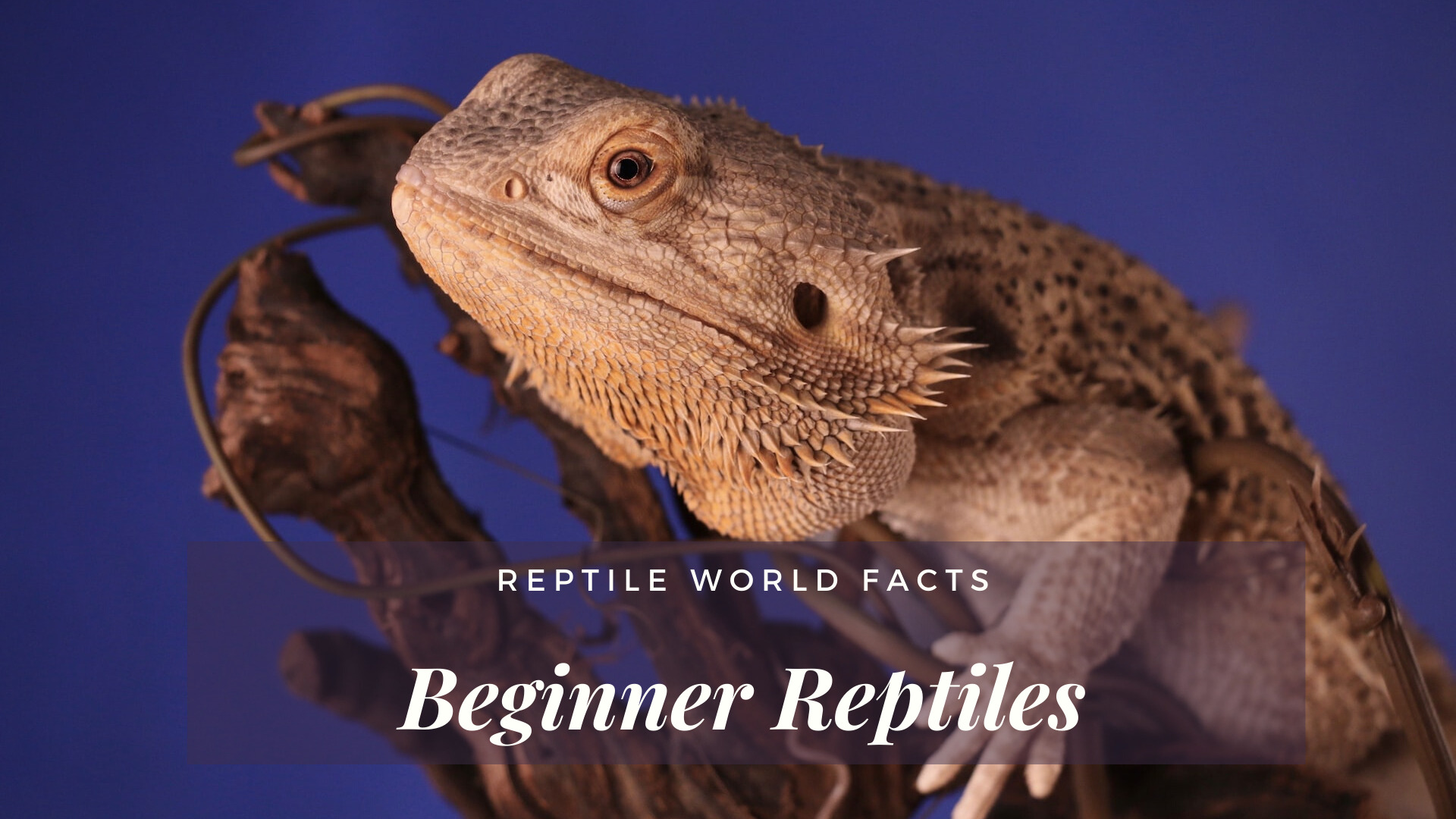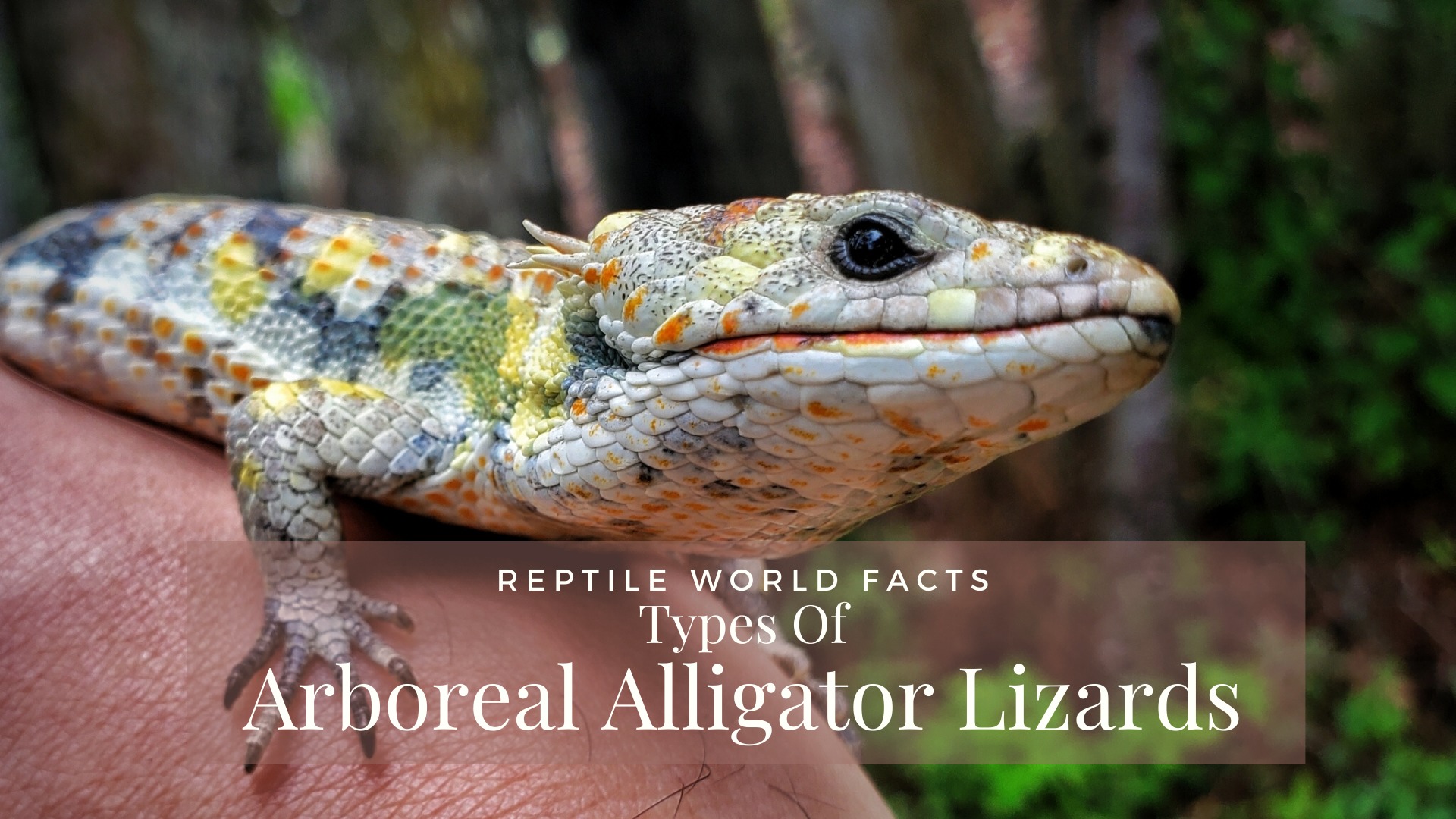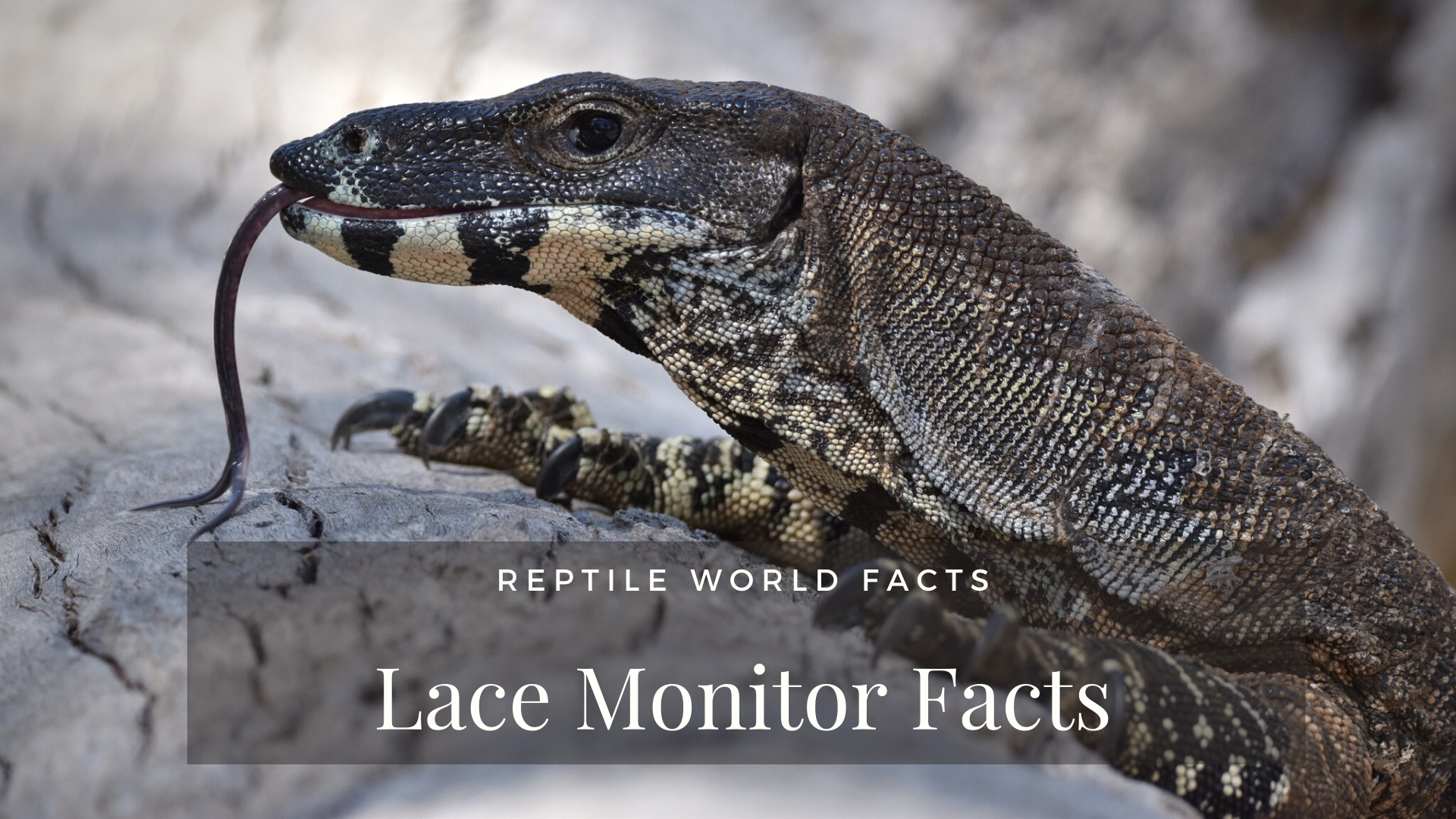Banner Photo: Source
Bearded dragons are a good choice for people looking to get into exotic pets, and are looking for a larger lizard with lots of personality. Once you set up a proper enclosure for your new friend, keeping up with the proper maintenance for your bearded dragon will be fairly simple. Keep reading to learn how to care for your new best friend!
A quick note that links to amazon products are affiliate links that we will make a commission off of in order to help support this blog and its content, at no extra cost to you.
Quick Facts
Life Span: 8 – 12 Years
Enclosure Size: 4 ft x 2ft x 2ft
Temperature: 90 – 95 F for basking spot, Avg. 86 F For The Rest of The Tank
Diet: Omnivore
Sleep Pattern: Diurnal (Awake During The Day)
Care Sheet – Bearded Dragon
1. Tank Mates
Bearded dragons are solitary reptiles, meaning that they don’t need, or particularly like company. They do best as the only reptile in the enclosure, not having to compete for food, water, heat, or space. If you put a male and a female bearded dragon together, this may result in them mating, leaving you with fertile eggs and a bearded dragon female with unnecessary stress put on her. Males are also territorial and may cause fights with other males. While it may be possible to keep females together, enough space is needed, and fights are still a possibility, so you would need to be sure you had a second tank ready to go, and that you have the time to be constantly on the lookout to stop fighting before it becomes fatal. It will always be a risk, and having one happy bearded dragon is better than two sick/injured ones together, so we don’t recommend it.
As far as other animals go, it is best to not mix bearded dragons with any other species. If the species is smaller than the dragon, the dragon may try to eat it. If it is larger than the bearded dragon, it may go after the bearded dragon. Not to mention that the environment like heat, humidity, etc. would have to be the exact same as the bearded dragons. Therefore we recommend that you keep your beardie in their own enclosure, by themselves. Again, they are solitary, and we promise they aren’t lonely. The only company they need is yours.
2. Animal Size

Bearded Dragons are one of the larger lizards that are recommended for beginners. This makes them appealing to many people who want something larger than a leopard gecko or crested gecko, but don’t want something too large, or too difficult. Bearded dragons can range in size, but the largest ones tend to get up to 2 feet in length, including their tail. Their weight can range from 280 grams to 510 grams. This makes for a nice-sized lizard that is a decent size, but is still manageable as far as holding and being able to stay in control goes.
3. Temperament, Handling, and Behavior

Bearded dragons are often described as the lizards with the biggest personality. They are often inquisitive lizards and always look like they are interested in what’s going on around them. Bearded Dragons are also quite docile for lizards, and often seem to enjoy being handled and taken out for time to run around (with proper supervision of course). They are also one of the few beginner reptiles are that diurnal, which means they are awake during the day. This means you can take them out for bonding time during the day without disrupting their natural sleep schedule.
There are also a few different motions or things that bearded dragons will do that can tell you how they are feeling. These things can include:
- Head Bobbing. Bearded dragons will head bob (which is exactly what it sounds like) when they feel as if they have dominated someone or something. They feel confident and will do this to show whatever it is they have dominated, that they are in charge. They may also do this if they see their own reflection in the glass.
- Waving. It is commonly believed that bearded dragons may wave when they want to show that they don’t mean any harm, and they don’t want you or whatever is startling them to hurt them either! It is a display of submission and is often used by young bearded dragons who are more easily scared than the larger adults.
- Black/Puffed Up Beard. Bearded dragons may puff up their beard and change their beard to a dark black color when they are stressed out about something. This may be because they feel threatened, are sick/injured, or during mating season to assert dominance to impress female dragons. Try to find out the cause of the stress for your bearded dragon so you can fix whatever is bothering them.
4. Heating
Heating is extremely important for the health of your bearded dragon. Without proper heat, you can end up with a very sick lizard. So, let’s get into how to stop that from happening!
Bearded dragons are originally from Australia, so as you can imagine they need quite a high temperature to simulate their natural habitat. You can provide this temperature for them in a few different ways. Mercury vapor bulbs, ceramic heat emitters, and heat basking lights are all good options to heat your bearded dragon’s tank. Heat mats (that go under the glass tank) are fine to add as supplemental heat in the winter when it gets quite cold, but they are not the best as the only heat source. Any heat rock may look nice, but should NOT ever be used, as they are unpredictable and can seriously injure and burn your beardie.
Heat gradients are important for your bearded dragon’s tank. Having a hotter side and a cooler side allow your bearded dragon to find a comfortable spot in their enclosure, depending on if they want more or less heat. Good daytime temperatures for the hot spot are around 90 – 93 degrees Fahrenheit for adults and 95 – 100 degrees Fahrenheit for babies. The cool side of the tank should be around 80 – 85 degrees Fahrenheit. Temperatures can drop to the low 70’s overnight.
A proper thermostat is important to keep your bearded dragon safe and healthy. A thermostat will control the temperature of your bearded dragon’s tank and will turn off bulbs if they malfunction and get too hot. You can get a thermostat that will turn your heating device on and off depending on what needs to happen to have the perfect temperature. Or you can get one that dims your heating device, meaning it is always on at the perfect temperature. Either kind is fine, and will keep your pet safe and nice and warm!
Make sure you also have a proper thermometer to make sure everything is working and the proper temperatures. Temperature guns or proper thermometers are great, quick, and accurate.
5. Lighting
One of the most important things you need for your bearded dragon is a UVB light. If bearded dragons do not have the proper amount of UVB light, they can grow improperly, and become deformed if they develop metabolic bone disease. This can lead to deformed bones, and an inability to walk properly, or even eat properly. While it can be stopped from progressing, you won’t be able to completely cure it, and your dragon will have lasting impacts for life.
Bearded dragons need quite a large amount of UVB compared to many captive lizards, so choosing the right UVB light is extremely important. Linear tubes created specifically for UVB like the reptisun 10.0 are a great option, providing a good amount of UVB for your dragon. Mercury vapor bulbs put out large amounts of UVB, and are also a great option. A good thing to note is that UVB linear tubes will need to be replaced every 5 – 6 months, even if they still put out light. Coiled or compact UVB bulbs are not suitable for bearded dragons (or any reptile, really) as they quickly stop producing UVB, and they have been linked to many health problems in lizards.
6. Food
Here is a good list that will tell you what vegetables, plants, insects, etc. are safe and unsafe for you to feed your bearded dragon.
Younger bearded dragons will need to be fed more often, and more protein than adults. Offering them crickets multiple times a day will allow them to eat as much as they need while growing. Offering vegetables a couple of times a week is also recommended, so they acquire the taste for them. Make sure the crickets you feed them are small enough, about .5 an inch, as they will attempt to eat food that is too large, and they may choke. See the list above for other acceptable insects to feed them.
Adult bearded dragons have almost an opposite diet. Their diet should consist mainly of veggies and a few insects. You can offer this daily, or sometimes every other day. It is important to make sure your bearded dragon does not overeat and become obese, as this can have serious impacts on their overall health.
It is important to make sure your bearded dragon gets the proper vitamins, and that the insects you feed them are gut-loaded. You can pick up something like this to feed to the insects you will be feeding to your bearded dragon. Vitamins such as these and calcium can be put on to your beardies’ food to help them get the proper nutrients they need to thrive and be healthy.
7. Substrate
To start this off let’s mention two substrates that we do not recommend. One is calci sand. This is unfortunate as it is offered in many pet shops, and even pre-packaged in many bearded dragon kits. While we won’t go into huge detail as there are many great articles out there on why it is bad, this sand could cause impaction and sickness in your bearded dragon, so it is best to avoid it.
The second one that we don’t recommend is reptile carpet. While it is easy to remove and clean, bearded dragon’s claws can get stuck in the carpet and get ripped or broken, and this can lead to pain and infection for your pet.
Now, what’s left to use? There are a few options for plain substrates. Paper towel is cheap and easy to clean, just replace as needed and you’re good to go. Tile is another substrate that is good, as it is easy to clean, can’t be ingested, and depending on what type you get isn’t too expensive.
If you want to go for a more natural planted terrarium look, you can mix playground sand with no additives (less dust) and pesticide and chemical-free dirt. This will allow a more natural look and feel, without being as unsafe as calcium sand. However, to avoid risks or impaction, feeding your dragon its food in a shallow bowl can help prevent them from swallowing the mixture.
It is good to note that baby bearded dragons should only be kept on newspaper or tiles until they are an adult, as this helps keep them safe. You can switch to other options later on.
8. Enclosure

Source
Here are the recommended tank sizes for your bearded dragon, based on the size. Different sized bearded dragons will need different sized enclosures.
- Juvenile/Young Dragons – 20-gallon tank. This will allow them plenty of space to move around, but not so much space that they are unable to find/catch their food.
- 10-16 Inches – 40-gallon tank. Smaller beardies or early adult bearded dragons need a minimum of 40 gallons to be able to move around properly and not be cramped. Of course, if you wish to go with a larger size your bearded dragon will appreciate it.
- 16-20 Inches -50+ gallon tank. As these Bearded dragons are starting to get to the bigger side, they will need more room. 50 gallons or more will be adequate, and as always, bigger is better.
- 20+ Inch – 75 – 120+ gallons. If your bearded dragon is larger than 20 inches, a 75-gallon is the minimum size you should go with. But something that is 120 gallons will be roomier for your dragon to live in.
As far as the tank itself goes, there are many options you can go with. It all depends on the look you are going for, as well as your budget. Glass enclosures with a sliding screen lid on top, glass enclosures with swinging doors on the front, pvc cages, melamine cages, and vision cages are all options you can look at. Again, it’s your personal preference on what you choose, the most important factor is that it’s big enough.
Now it’s time to think about decorations! Your bearded dragon isn’t going to feel happy or secure in an empty tank. If you have a glass tank it’s a good idea to get a background for your tank, such as this one, to help your bearded dragon feel more secure and less out in the open.
Hides are important for your bearded dragon to feel safe. There are multiple things you can use as hides, such as store-bought ones like these, cardboard boxes (regularly switched out as they get dirty), plastic buckets flipped over with a hole cut out of the side (make sure the edges are smooth), or anything else you can think of. As long as it is safe for your bearded dragon, and big enough, your dragon will appreciate the place to get away when it doesn’t want to be seen.
Another thing that bearded dragons enjoy are hammocks. They will enjoy spending hours hanging out in their hammocks. Most pet stores offer hammocks for your reptiles, just make sure that it is a kind that your beardie can’t easily get their toes stuck in, as this would pose the same problem as the reptile carpet.
And finally, you can decide what else you want to finish off your tank! Fake plants (or real if you make sure they are bearded dragon safe!), branches, rocks (not heat rocks), or any other cool decorations you think your beardie and you would like are perfect. Get creative and create a tank your dragon will love, and that you are proud to have!
9. Humidity & Water
Since bearded dragons are from Australia, you won’t need super high humidity. A humidity of about 30 – 40% percent is recommended, which you can keep track of using a proper hygrometer. Make sure you don’t allow the humidity to get too high, or it can cause respiratory problems in your dragon.
Having a decent-sized water bowl in your bearded dragon’s enclosure will help them get the water they need. Another way to help them stay hydrated is to give them baths a couple of days a week. Fill up the sink with warm (NOT hot) water, only enough so that your bearded dragon can still comfortably stand. I’ve found that gently moving the water around with your finger will help get their attention and encourage them to drink. This will also help them with any bowel movements they need to have.
10. Determining the Sex of Your Bearded Dragon

Source
The main way to tell if your bearded dragon is a male or a female is to wait until they are a bit older and check under their tail. There are two things you can look at to determine if they are a female or a male. One is to have the bearded dragon facing away from you and to gently lift the tail so you can see the base. If there are two lines on either side of the tail with a dent in the middle your dragon is male. If there are no dents and a lump at the very base of the tail your dragon is a female.
The second method is to use a bright light, like a flashlight or the light from your phone. As with the first method, have your dragon face away from you and lift the tail. Put the light on the top side of the tail, so that you can see through the tail. If you see two dark shadows in the shape of a line on both sides of the tail your beardie is a boy. If you see one shadow in the middle, it’s a female.
—
Enjoy this article? Share it with your friends using the links below! Also, leave a comment below and let us know what you think. Thanks for reading!






is there anything that i have to know before getting a bearded dragon?
The article above goes over all of the things you’ll need to properly care for a bearded dragon! The two most important things that I think you should know are that bearded dragons can get quite large (up to 2 feet), and therefore need a pretty large enclosure when they are adults, and that is something you should prepare for.
Another thing to keep in mind is that bearded dragons can get metabolic bone disease, so it is very important to make sure you get your dragon a UVB light bulb. It is also important to replace the bulb every 5 or 6 months, even if it is putting out light. After 5 to 6 months the light bulb does not put out enough UVB to keep your dragon healthy anymore. Proper vitamins also will keep your dragon healthy and prevent it from getting bone disease.